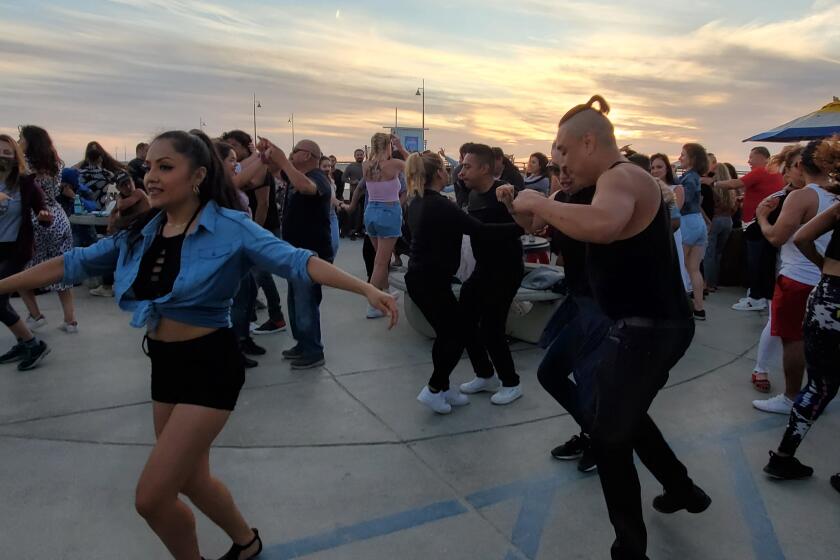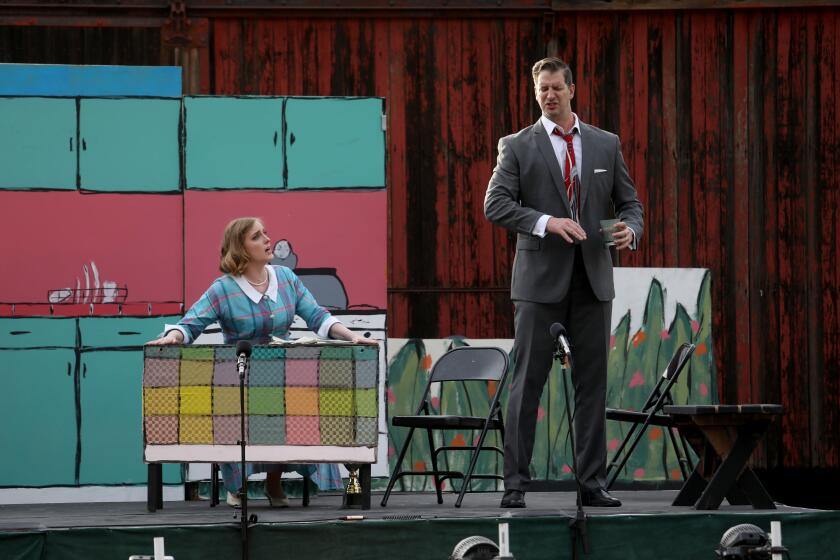For L.A. dance studios, reopening doesn’t yet pay the bills. But there’s hope
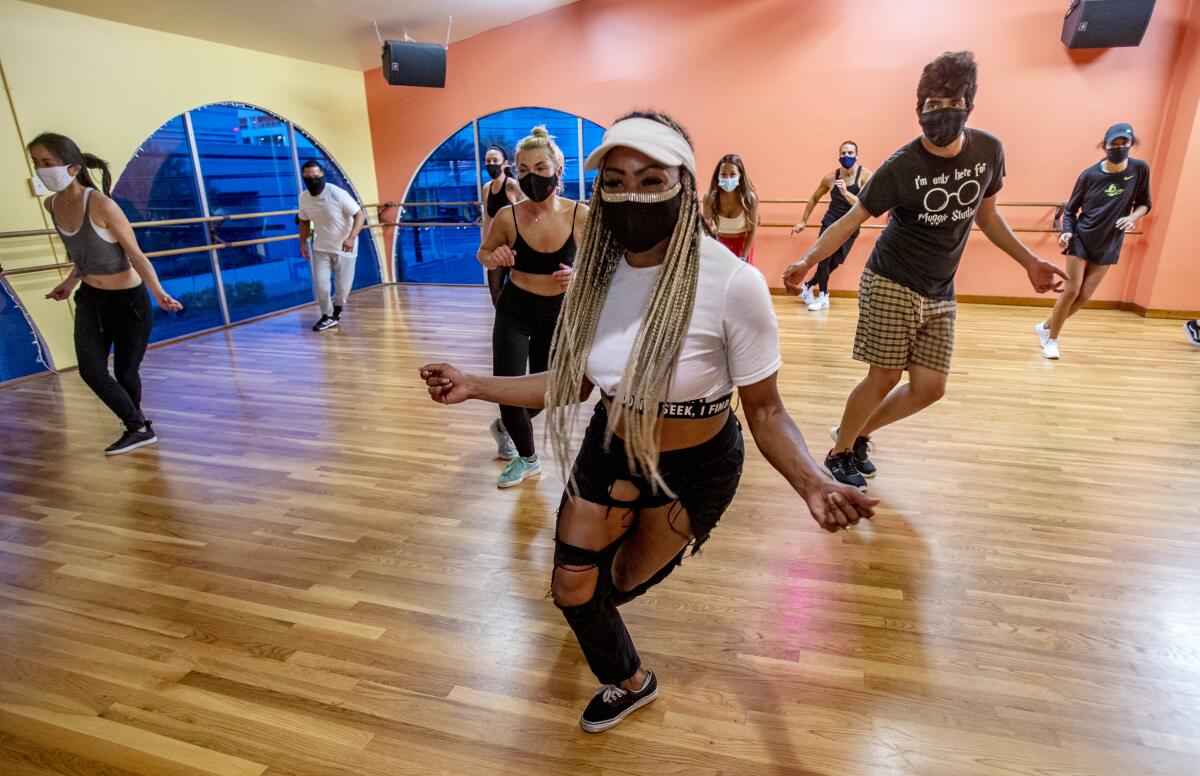
- Share via
Millennium Dance Complex — the L.A. studio where class videos regularly rack up millions of views on YouTube — is fortunate, said founder AnnMarie Hudson. Unlike a number of dance studios across L.A. that permanently closed during the pandemic, Millennium has been able to hold on for more than a year by following an unconventional strategy.
“We decided to totally close, not do anything underground and just really put the safety of ourselves and our dancers first and really comply,” Hudson said. “That was kind of hard, especially when other people were opening.”
Some factors that helped the studio persevere? A landlord who is postponing the studio’s $22,000 monthly rent payments, PPP loans totaling more than $110,000, the launch of a subscription-based platform for dance tutorials, and the studio’s nearly 30-year legacy and global brand with franchises in cities including Las Vegas, Nashville and Shanghai.
In April, Millennium resumed a limited schedule of in-person classes, operating under California’s orange tier of COVID-19 restrictions, which allow dance and yoga studios and gyms to hold indoor classes at 25% capacity.
At 25% capacity, Millennium’s large studio can hold about 25 students distanced and masked. Pre-pandemic, the studio hosted about 30 classes a day. The most popular classes would sell out with more than 100 students, each paying about $20 for a drop-in class or $30 to $40 for a master class with a sought-after choreographer.
Reduced-capacity classes won’t bring in nearly enough to cover monthly expenses, which before the pandemic included not just rent but also $40,000 in payroll and about $5,000 in electric bills, said Hudson, who hasn’t made an income in the last year. But a restart of any kind represents light at the end of the tunnel.
“It’s not about the money right now,” Hudson added. “It’s about getting dance up and running.”
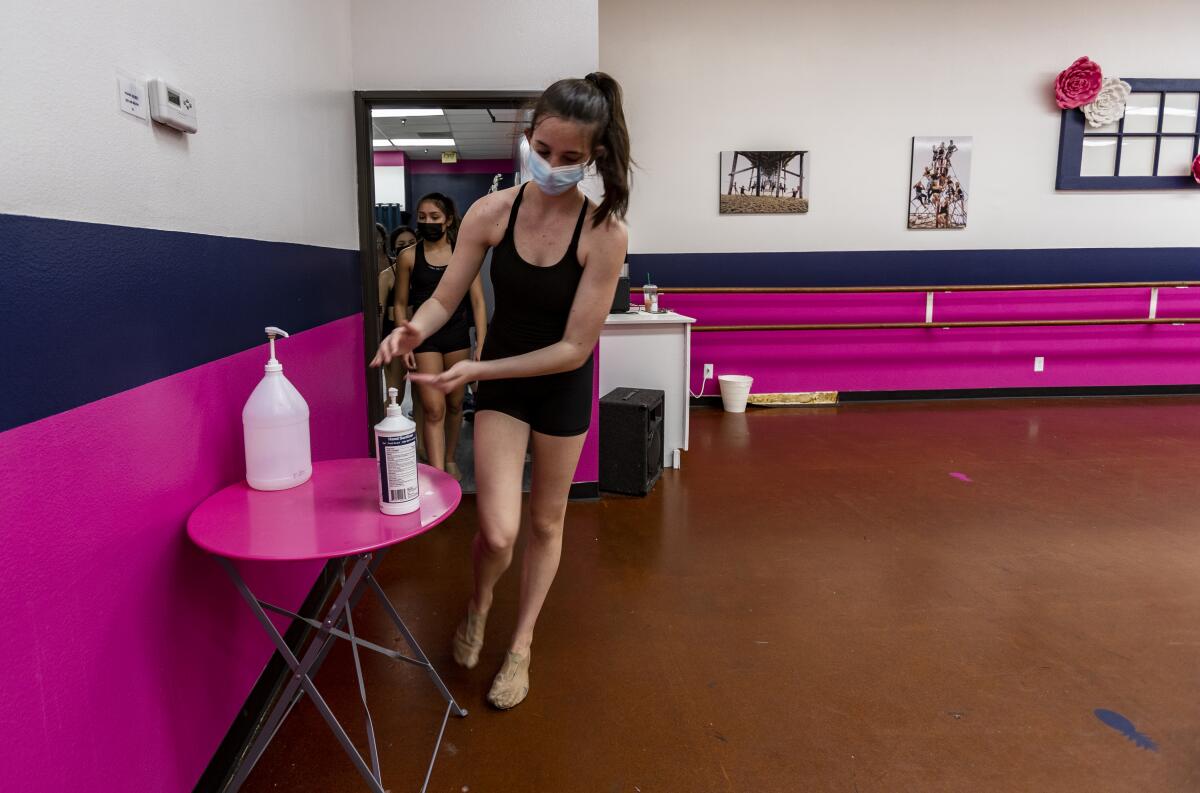
The pandemic rapidly exacerbated an already difficult landscape for dance spaces across the city, as many studios struggled to survive amid real estate development and rising rents.
In Los Angeles, dance studios are where professionals train to perform on stages or work in film, TV and music videos. It’s where working dancers make supplemental income and build a fan base for their choreography by teaching. It’s where amateurs work out and express themselves creatively.
But many popular studios were unable to recover after customer quarantines and government-mandated closures.
In 2020, studios including Ryan Heffington’s Sweat Spot in Silver Lake, Movement Lifestyle in North Hollywood and Pieter Performance Space in Lincoln Heights closed their doors. (The Sweat Spot and Pieter continue to offer virtual classes.) Forced out of its Hollywood studio last September, Edge Performing Arts Center will hold classes at a temporary location while it completes its new studio, which is set to open in 2022.
As Los Angeles was set to enter the orange tier, a salsa dancing scene emerged on Venice Beach. In these late pandemic days, it’s a sign of renewal.
For the dance studios still open, owners say the path toward stability will be arduous, even as coronavirus cases fall and vaccination rates increase.
On Tuesday, L.A. County reached the threshold to enter the state’s yellow tier, which would allow dance studios to hold indoor classes at 50% capacity as soon as next week. With California aiming to fully reopen its economy by June 15, allowing businesses to resume operations at 100%, it may be a while longer before dance studios can begin digging out of their financial pit.
In Central L.A., 3rd Street Dance opened in 1979 and specializes in ballroom and partner dance. The studio spent the last year opening and closing as the city’s pandemic restrictions tightened and loosened. “It’s kind of like this moral obligation to stay open because so many community members really depend on our studio,” said owner Leslie Ferreira.
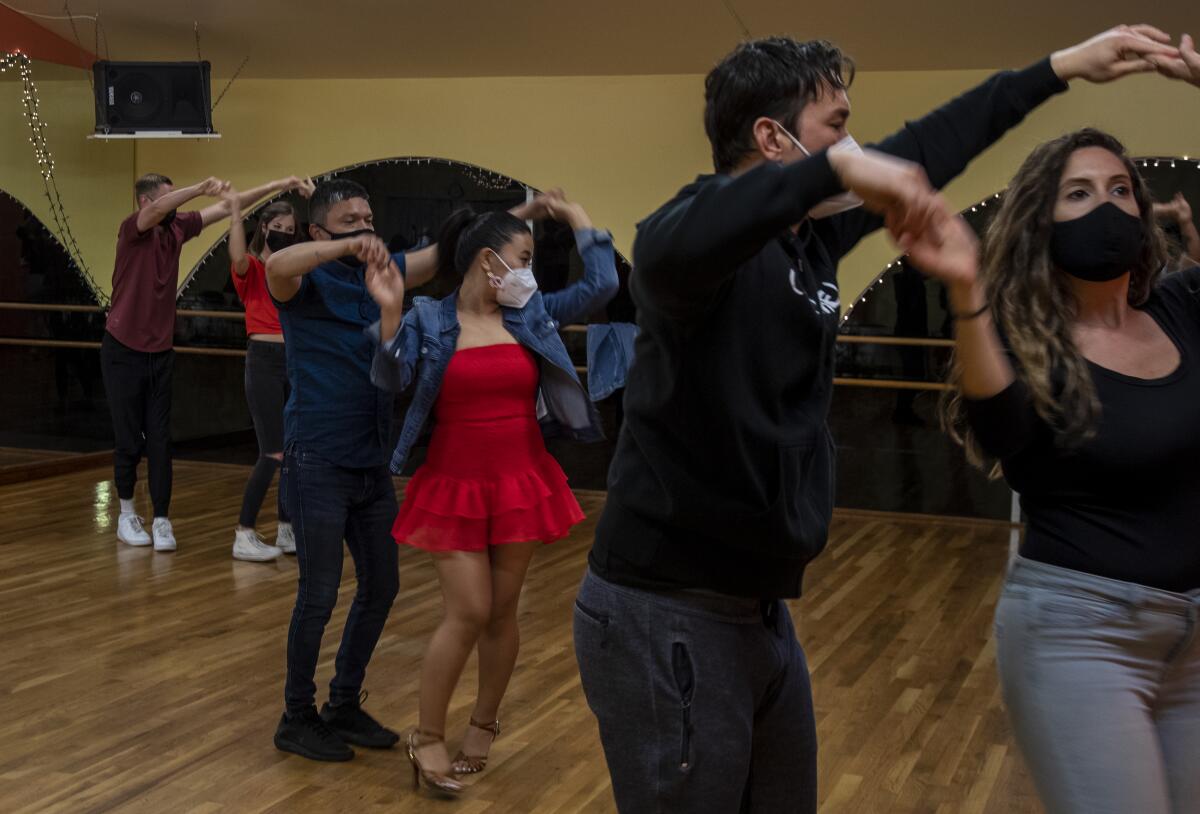
Private rentals brought in a small stream of income, but 3rd Street Dance lost more than 90% of its business in the pandemic, Ferreira said.
“It’s been horrible,” she said. The studio raised more than $11,000 on GoFundMe to help cover monthly operating costs that it said are $20,000. “If it wasn’t for all of the loans and the grants, then we definitely wouldn’t have been able to keep going,” Ferreira said.
Before the pandemic, the studio hosted events that could draw 200 people spread across several rooms in the studio. When the studio reopened in late February, dancers had to bring their own partners, and classes were limited to 12 people. With the increase in capacity, classes now can hold 16 dancers.
Over the last year at South L.A. studio Crenshaw Yoga and Dance, “enrollment went down, rentals were scarce to none,” studio manager Queala Clancy said via email. Despite L.A.’s reopening plans, the studio will continue online classes for the next two months out of consideration for the well-being of instructors.
“We too are concerned for those in the community as our facility is located in an area that has been classified high-risk,” Clancy said. “As more people become vaccinated and case numbers go down, we will feel more comfortable with slowly opening our doors.”
Director and cinematographer Tim Milgram began offering in-person classes in mid-April at his TMilly TV studio in North Hollywood, which focuses on training dancers to perform for cameras. When the pandemic hit, Milgram shifted his energy to the subscription-based dance education platform he launched about four years ago, which helped keep his studio afloat.
Opening under limited capacity is a way to support L.A.’s dance community, those who have been desperately missing opportunities to hone their craft and connect with other artists.
“I’m perfectly happy to abide by city rules. … It’s not going to make us any money, it might even cost us money to run this way, but honestly I don’t really care,” Milgram said. “I just want some semblance of a positive vibe and having people feel safe in our space.”
Milgram was also pleasantly surprised to see the city’s reopening plans acknowledge dance outside of fitness. “Oftentimes, dance gets swept under the rug. Different types of businesses should require different types of safety procedures,” he said.
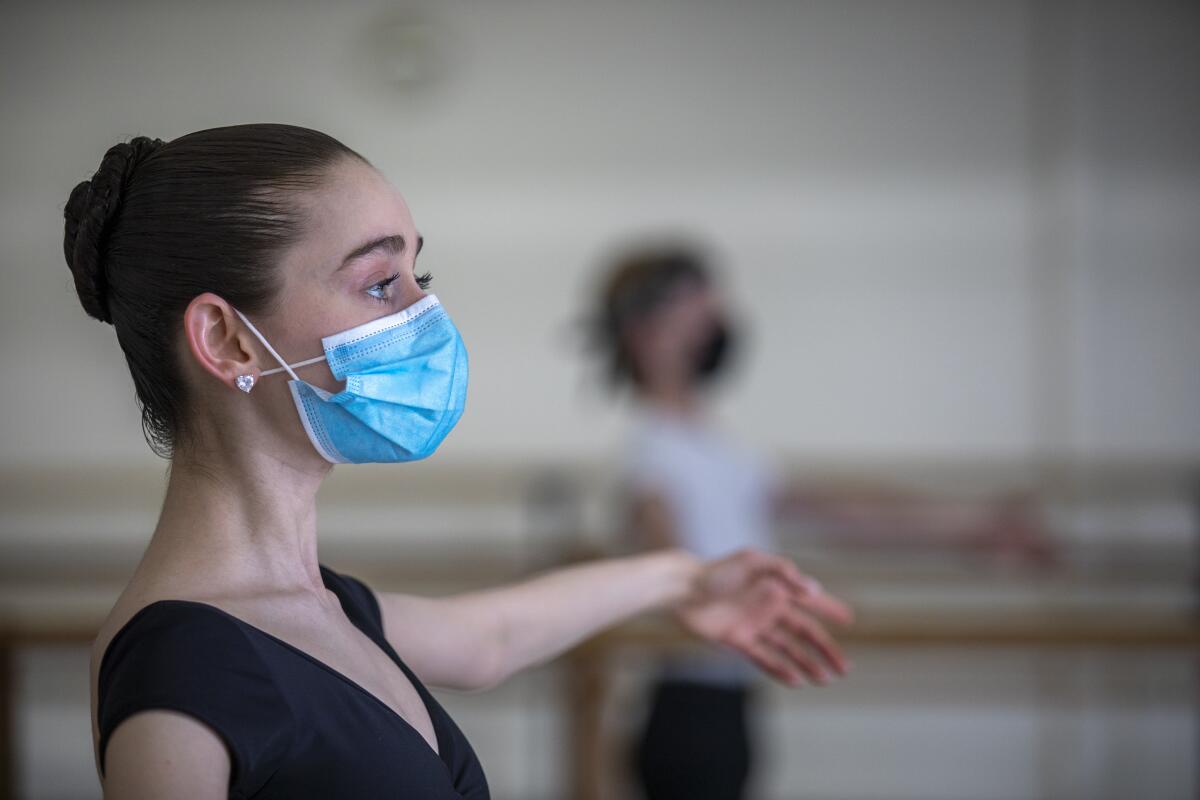
The last year has been “horrific” for dance, said Allegra Clegg, the owner and executive director of Westside School of Ballet in Santa Monica, which opened in 1967.
Clegg estimated the studio loses about $20,000 each month. Westside received two PPP loans and launched a crisis relief campaign that raised nearly $215,000. Last summer, Westside also built an outdoor studio to host classes. “We’re trying every avenue we can to stay open because it’s such an amazing institution that I can’t bear to see go away,” Clegg said.
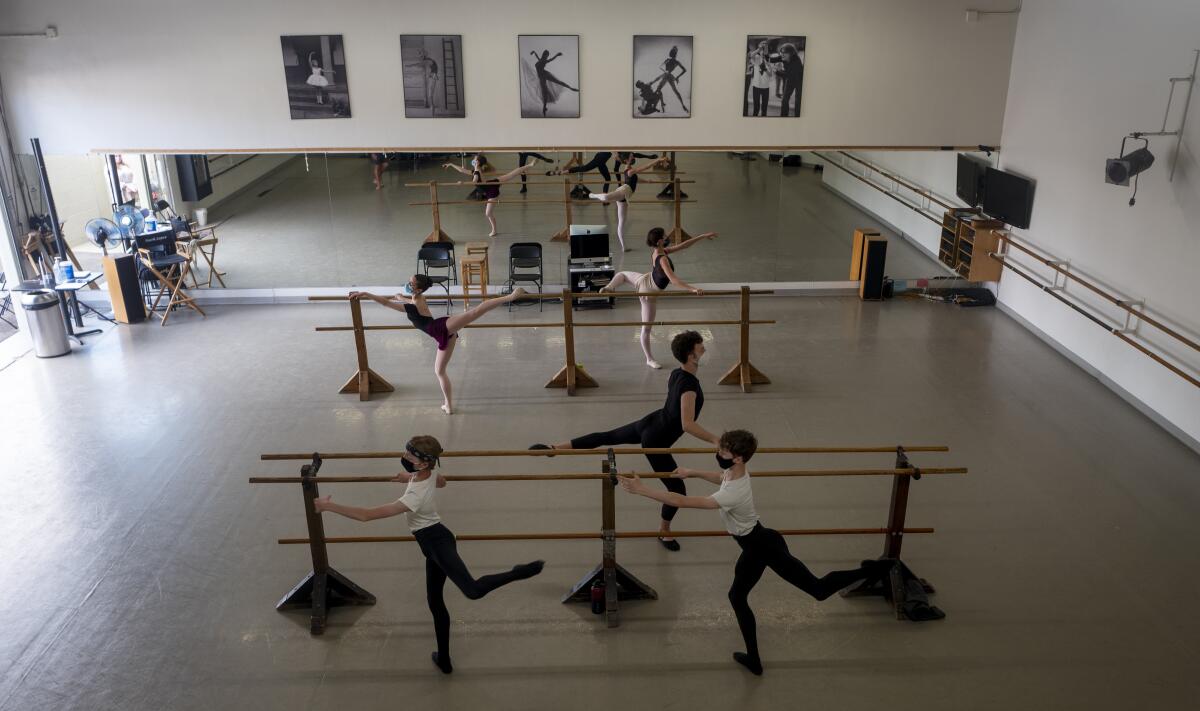
Most of the studio’s students don’t go on to become professional dancers, but studying the craft “brings grace and grit, as we always say, and discipline and so many things to a child’s life that goes beyond the actual dance lesson or the dance performance,” Clegg said.
At 25% capacity, the average class size is 10 students. “It still is not enough to cover our expenses. We need 75% or higher to be able to pay our teachers, pianists and staff,” Clegg said. “Even if the city increases the allowable capacity some people are still afraid to return, so I anticipate our numbers will be on the low side for quite some time.”
While L.A. continues reopening, Clegg said the studio still needs outside support from donors to stay afloat. “because if this continues throughout the year, we’ll need to raise another $250,000 to keep our doors open.”
Some studio owners questioned how many professional dancers remain in L.A. after the pandemic wiped out popular sources of income, including teaching dance and fitness classes.
The city’s dance scene is filled with young people who move to L.A. to pursue a career performing on concert stages and in music videos, film and television. When productions shut down, some were forced to give up apartments and return to their family home to wait out the worst of the pandemic.
Millennium relies on work-studies, people who help with administrative tasks in exchange for classes. The studio had a roster of about 40 work-studies before the pandemic, and now “we have six in town starting up,” Hudson said.
Danceline LA, a studio in Culver City, had a roster of about 50 teachers. Co-owner Lauren Elliott estimated half returned to their hometowns.
“They were out here not just to teach, but also to audition,” Elliott said. “There’s no auditions … so I guess it felt financially better for them to move back where they were.”
Pacific Opera Project’s production of Leonard Bernstein’s ‘Trouble in Tahiti’ is the city’s first major live opera show that’s not a drive-in event.
More to Read
The biggest entertainment stories
Get our big stories about Hollywood, film, television, music, arts, culture and more right in your inbox as soon as they publish.
You may occasionally receive promotional content from the Los Angeles Times.
